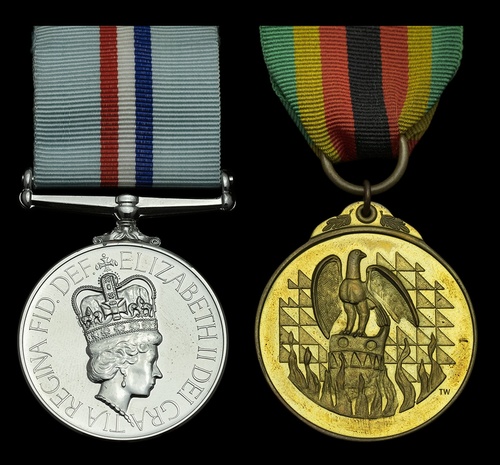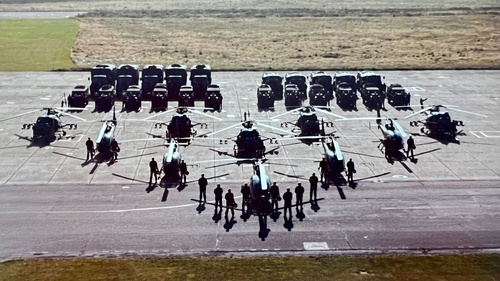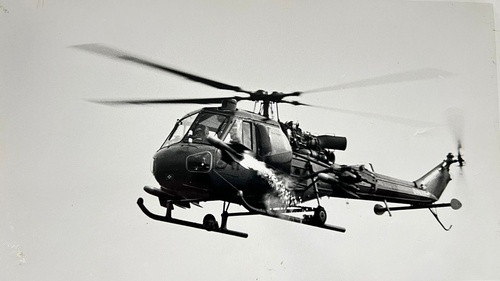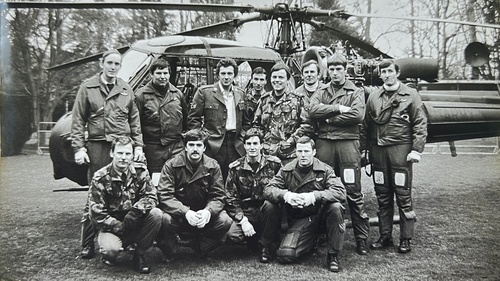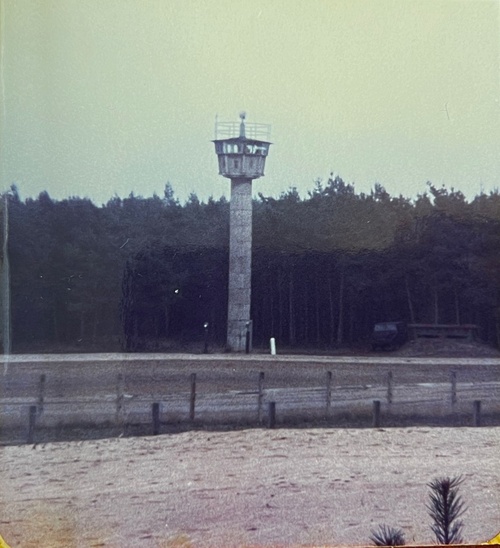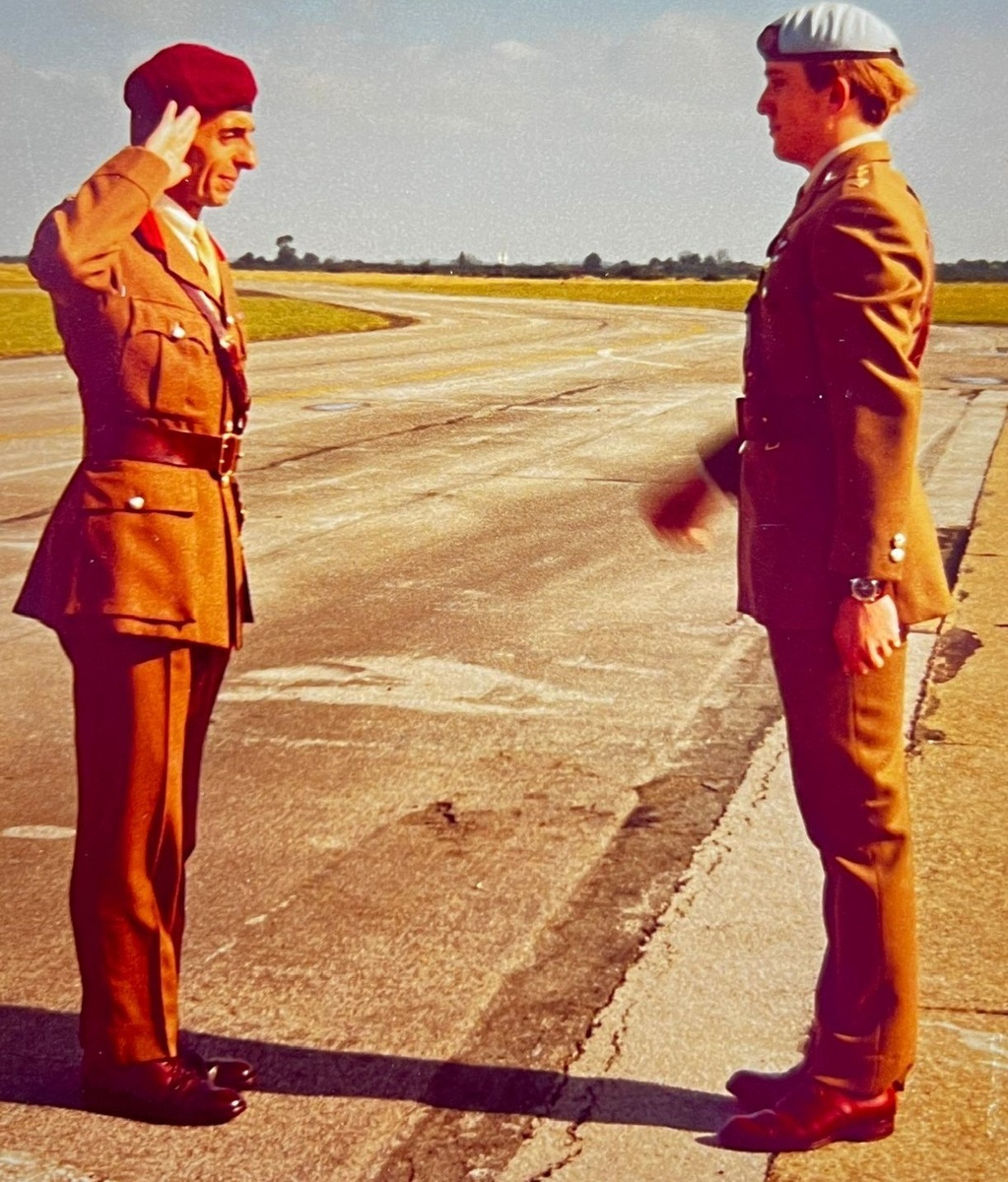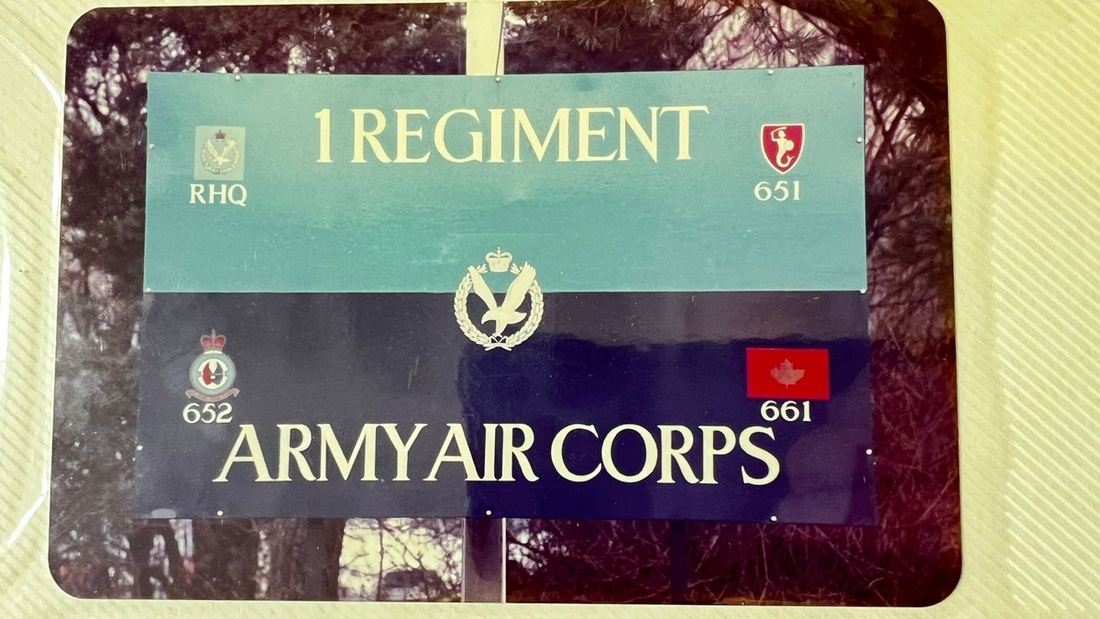Auction: 24003 - Orders, Decorations and Medals
Lot: 140
Sold by Order of the Recipient
The very rare campaign pair awarded to Captain S. J. Stead, Army Air Corps, who flew his helicopter in Rhodesia in 1980
Rhodesia 1980 (Lt S J Stead AAC), in its named box of issue; Zimbabwe Independence 1980, officially numbered '13626', in its named box of issue with matching serial number, good very fine (2)
Perhaps the best biography is offered by the man himself:
'Sandhurst May 1976 - Jul 1977
I started at RMA Sandhurst in May 1976 on SMC 12 (Standard Military Course) as one of the earliest potential direct entrant Army Air Corps officers. Previously all AAC pilots had been transferred from other Regiments. I passed out after two terms as a 2nd Lieutenant, but stayed at Sandhurst to complete RCC 12 (Regular Careers Course).
After Sandhurst the Army Air Corps required their potential officers to complete 6 months with an infantry regiment, in order to better understand the dependancy the teeth arms required from air support. The only active service at the time was in Northern Ireland, so I was posted to The Staffordshire Regiment, as they were shortly to begin a 6 month tour. Whist at Sandhurst I started civilian flying at Blackbushe airfield and attained my PPL on light Cessnas (Private Pilots Licence).
Belize Jul - Dec 1977
However, I arrived on a Monday morning in July 1977, having left Sandhurst on the previous Friday, to be told that as the Staffordshire Regiment were the "Spearhead" battalion at the time, and were being rushed out to Belize; it was believed that Guatamala was about to invade. The Americans had discovered some oil in the south of the country and "wanted" some. So, having left Sandhurst on a Friday, the following Thursday I was disembarking a C130 in Belize City with live ammunition.
We were quickly deployed into the jungle, where we stayed for about a month acclimatising and waiting for the invasion to start. Nothing happened. Gradually the alert state reduced and the battalion moved out of the jungle to the coast. It seems that we, together with a squadron of Harriers had put the Guatamalans off.
I was then sent off to set up and run an adventure training camp on the coast, in order to give our soldiers RnR after spending time patrolling the jungle. After two months I went through my own jungle training and spent the remainder of my time in and out of the jungle. I returned to the UK in December, ready to commence the Army Flying Course in January 1978.
Middle Wallop Jan 1978 - Jul 1979
There were three phases to the course.
Fixed Wing - 60 hours on Chipmunk
Basic Rotary - 60 hours on Bell 47
Advanced Rotary - 120 hours on Gazelle (Approx 40 learning to fly the machine and then 80 learning to use the machine as a military machine)
It was during this phase, in October 1978, that my Gazelle had a mechanical failure at low level and crashed into the side of a hill. I managed to crawl away from the wreck and after a spell in hospital and a period of recovery carried on with the course. I completed the course in May 1979. However, the Army was posting me to 657 Squadron, near Cambridge, to fly the Scout helicopter. This meant that I stayed at Middle Wallop for another two months converting to yet another aircraft. I completed the conversion in July 1979.
657 Squadron AAC - Oakington Barracks - Jul 1979 - May 1982
The squadron supported 7 Field Force, a brigade based at Colchester. Our main role was to support BAOR (The British Army of the Rhine). As as result we joined exercises in Germany regularly.
Zimbabwe Dec 1979-March 1980
In December 1980, following the Lancaster House peace conference, some of the British Army were deployed to Rhodesia, as it was then, to form The Commonwealth Monitoring Force. This force was to oversea all of the guerrillas of Joshua Nkomo and Robert Mugabe. Although my squadron was not sent I was leant, together with an air gunner to 656 squadron who were. I arrived just after Christmas 1979.
There followed the most challenging flying I ever did. Our base was at Gwelo (now Gweru), which sat at 5,000ft above sea level. We were concerned that we may be mistaken by the guerrillas for Rhodesian Airforce aircraft, so we flew everywhere at 5,000ft above ground level, out of small arms range. 10,000ft above sea level was the service ceiling for the aircraft, so, in order to carry enough fuel we could not carry a crewman to help with navigation and we had the back doors and seats removed. Also, the only navigation equipment were a map, compass and the Mark 1 eyeball. Zimbabwe is 1 1/2 times the size of France, and we were covering it with 12 helicopters. It was interesting, particularly as were were often refuelling on our own from barrels in small dumps in the bush. Towards the end we took two Scouts up to the Victoria Falls and I managed to take a very poor photo of the scene. Brigadier Spacey, 7 Field Force Brigade Commander presented me with my Medal for that time.
In early 1982 a film called "Who Dares Wins" was being made at Pinewood Studios. They needed 3 Scouts to fly SAS soldiers onto the roof of the "American Embassy". The following photo appeared on the front page of The Times newspaper. My helicopter was the middle one of the three.
On 1 April 1982 Argentina invaded the Falklands. I was at my parents for the weekend and received a phone call on the Sunday morning from our duty officer telling me that I had to get back to base ASAP as I was going to the Falklands. However, when I got back the picture was clearer. I was not going, but I had to fly three of my aircraft down to RNAS Yeovilton and hand them over to the Royal Marines Air Squadron. I did so and handed them over to a Captain I had known when I was at Middle Wallop. Very sadly he was shot down and killed; his name was Dick Nunn.
1 Regiment Army Air Corps Hildesheim June 1982 - July1983
Having converted to the Lynx we were now in a difficult phase of the Cold War. Both sides were seriously planning for a real war. I was now flying our main attack helicopter, the Lynx AH1. It was an extremely powerful twin engined machine compared to the single engined helicopters I had flown up to now. It carried 8 American TOW anti-tank missiles. We spent most of our time very low, practising getting in and out of fire positions; fast hovering under pylon cables because we had to keep below the radar horizon. It was very exciting, particularly when we had to practice getting the whole Regiment out into fire positions in the middle of the night.
I became qualified as a PSI pilot (Persons of Special Importance). This meant that I was qualified to fly Generals and Senior politicians around. However, I had decided to leave the Army, for two reasons. Firstly, as an officer in the Army Air Corps one was expected to follow a normal officers career path. This meant that after two flying tours I would not see much more flying. Secondly, I was engaged to my now wife, who wanted a more stable existence than that of an Army wife. So in July 1983 I resigned my commission.'
Sold together with his Pilot's Flying Log Book (RAF Form 414), covering his entire career, to include several Qualification Certificates and a series of photographs.
I received my next posting which was to Germany flying the Lynx. I therefore left Oakington and returned to Middle Wallop at the beginning of May to begin my conversion course to the Lynx.
Middle Wallop May 1982 - June 1982
Subject to 20% VAT on Buyer’s Premium. For more information please view Terms and Conditions for Buyers.
Sold for
£900
Starting price
£580

